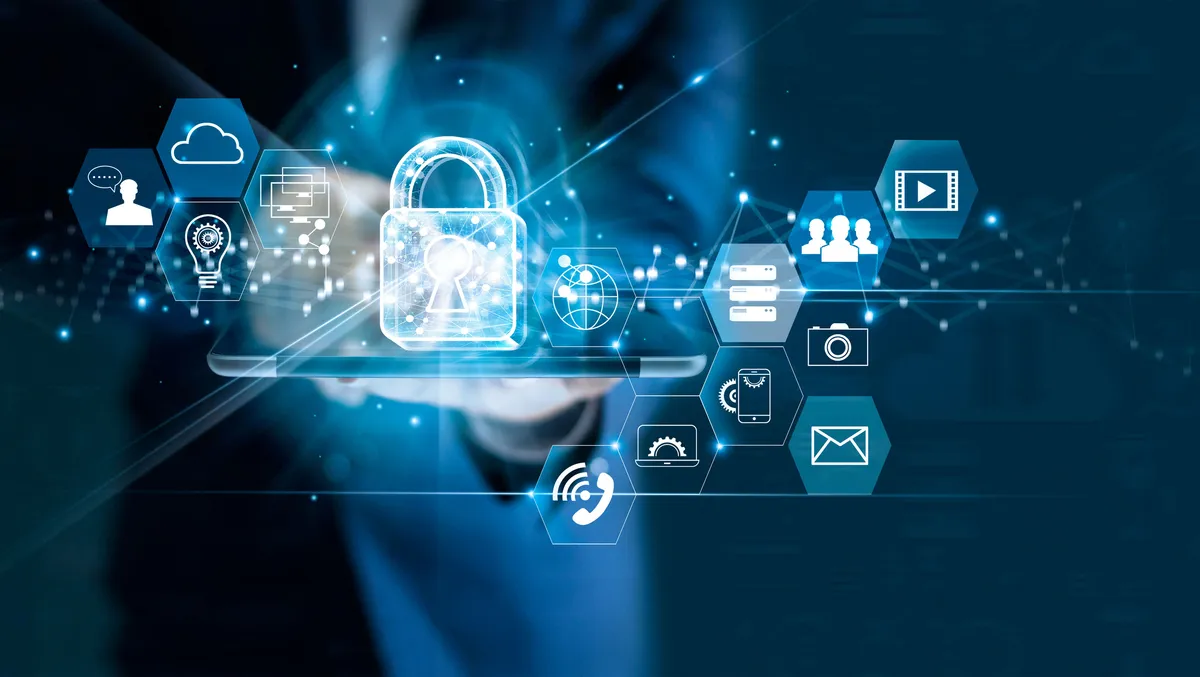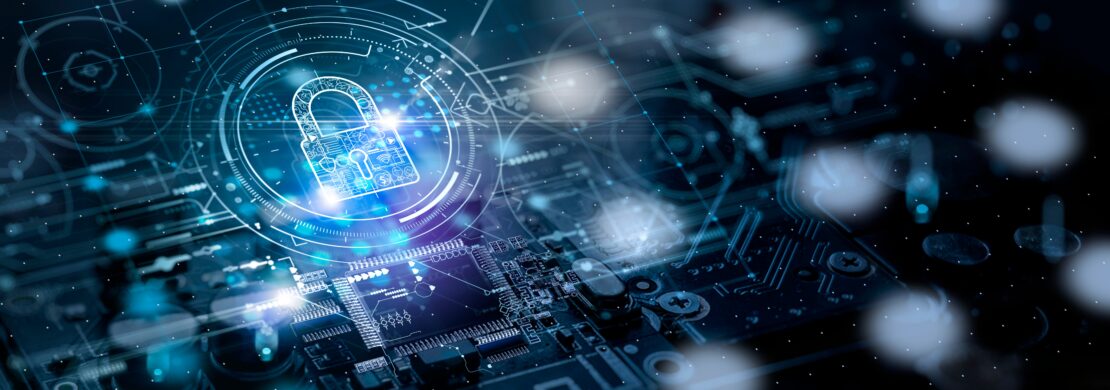Why FFT Perimeter Intrusion Solutions Are Essential for Effective Surveillance
Why FFT Perimeter Intrusion Solutions Are Essential for Effective Surveillance
Blog Article
How Information and Network Security Safeguards Versus Emerging Cyber Dangers
In an era marked by the fast development of cyber risks, the relevance of information and network safety has actually never been a lot more noticable. Organizations are significantly reliant on innovative security actions such as file encryption, gain access to controls, and aggressive tracking to guard their digital assets. As these dangers become a lot more intricate, recognizing the interaction between data security and network defenses is essential for alleviating dangers. This discussion aims to discover the essential parts that fortify a company's cybersecurity stance and the strategies needed to remain ahead of prospective susceptabilities. What remains to be seen, however, is how these measures will certainly progress when faced with future difficulties.
Understanding Cyber Hazards

The ever-evolving nature of modern technology consistently presents brand-new vulnerabilities, making it critical for stakeholders to stay vigilant. People might unconsciously succumb to social design tactics, where assailants control them right into revealing sensitive details. Organizations face special obstacles, as cybercriminals commonly target them to exploit important data or interfere with operations.
In addition, the increase of the Net of Things (IoT) has actually increased the assault surface area, as interconnected tools can serve as entrance points for assailants. Acknowledging the value of robust cybersecurity practices is critical for reducing these dangers. By fostering a thorough understanding of cyber individuals, hazards and companies can execute reliable strategies to protect their digital possessions, making sure resilience in the face of a progressively complex danger landscape.
Key Elements of Data Security
Guaranteeing information safety requires a complex method that encompasses various key parts. One fundamental element is information encryption, which changes sensitive details right into an unreadable layout, obtainable only to authorized individuals with the appropriate decryption secrets. This functions as a critical line of protection versus unauthorized accessibility.
Another essential part is gain access to control, which controls who can see or adjust information. By implementing stringent customer authentication methods and role-based access controls, organizations can lessen the threat of expert hazards and data violations.

Additionally, information masking strategies can be employed to safeguard delicate info while still permitting its usage in non-production settings, such as testing and advancement. fft perimeter intrusion solutions.
Network Security Techniques
Applying robust network safety and security approaches is essential for safeguarding an organization's electronic facilities. These strategies include a multi-layered strategy that consists of both hardware and software program remedies developed to protect the stability, privacy, and accessibility of information.
One important component of network protection is the implementation of firewall programs, which serve as an obstacle between relied on internal networks and untrusted outside networks. Firewall softwares can be hardware-based, software-based, or a combination of both, and they assist filter outgoing and incoming web traffic based upon predefined safety regulations.
Additionally, invasion click over here now discovery and avoidance read more systems (IDPS) play a vital duty in monitoring network traffic for suspicious activities. These systems can notify managers to possible violations and do something about it to reduce risks in real-time. Routinely upgrading and patching software program is also vital, as vulnerabilities can be manipulated by cybercriminals.
Additionally, carrying out Virtual Private Networks (VPNs) makes sure secure remote accessibility, encrypting data transferred over public networks. Segmenting networks can minimize the attack surface area and have prospective violations, restricting their impact on the overall framework. By embracing these strategies, organizations can effectively strengthen their networks versus arising cyber risks.
Best Practices for Organizations
Establishing finest methods for organizations is crucial in maintaining a strong safety and security position. A thorough method to data and network protection begins with routine danger evaluations to identify vulnerabilities and possible risks. Organizations should implement durable gain access to controls, making certain that just authorized personnel can access sensitive data and systems. Multi-factor verification (MFA) need to be a conventional requirement to boost safety and security layers.
Furthermore, constant employee training and recognition programs are important. Staff members must be informed on identifying phishing efforts, social engineering tactics, and the importance of sticking to safety procedures. Regular updates and spot administration for software application and systems are likewise essential to shield against recognized vulnerabilities.
Organizations should check and create case action plans to ensure readiness for prospective breaches. This consists of establishing clear communication channels and roles during a security event. Information security ought to be used both at rest and in transportation to secure sensitive details.
Last but not least, conducting regular audits and compliance checks will certainly help guarantee adherence to established plans and pertinent guidelines - fft perimeter intrusion solutions. By complying with these finest methods, companies can significantly enhance their strength versus arising cyber hazards and shield their essential assets
Future Trends in Cybersecurity
As organizations navigate a progressively complex electronic landscape, the future of cybersecurity is poised to develop dramatically, driven by arising innovations and shifting risk standards. One popular pattern is the integration of expert system (AI) and artificial intelligence (ML) right into safety and security frameworks, enabling real-time hazard discovery and response automation. These modern technologies can evaluate huge amounts of data to recognize abnormalities and potential violations a lot more efficiently than standard approaches.
One more critical fad is the increase of zero-trust architecture, which calls for continual verification of individual identifications and tool safety, no matter of their area. This approach minimizes the risk of insider dangers and improves security against outside strikes.
Additionally, the raising fostering of cloud solutions demands robust cloud protection strategies that address distinct susceptabilities related to cloud atmospheres. As remote job becomes a permanent fixture, safeguarding endpoints will likewise end up being vital, bring about an elevated emphasis on endpoint discovery and feedback (EDR) services.
Lastly, regulatory conformity will remain to shape cybersecurity methods, pushing companies to adopt more rigid information protection measures. Accepting these patterns will certainly be vital for companies to strengthen their defenses investigate this site and navigate the evolving landscape of cyber threats effectively.
Verdict
In final thought, the implementation of durable information and network safety steps is vital for organizations to guard versus emerging cyber hazards. By making use of encryption, gain access to control, and effective network safety strategies, companies can considerably reduce susceptabilities and shield sensitive information.
In an era marked by the rapid advancement of cyber risks, the value of information and network security has actually never been much more pronounced. As these dangers come to be a lot more complicated, recognizing the interaction in between data security and network defenses is crucial for mitigating threats. Cyber threats include a broad array of destructive activities intended at endangering the discretion, stability, and schedule of networks and information. An extensive approach to data and network safety and security starts with normal threat analyses to recognize vulnerabilities and possible threats.In verdict, the execution of robust data and network security actions is crucial for organizations to safeguard against arising cyber risks.
Report this page